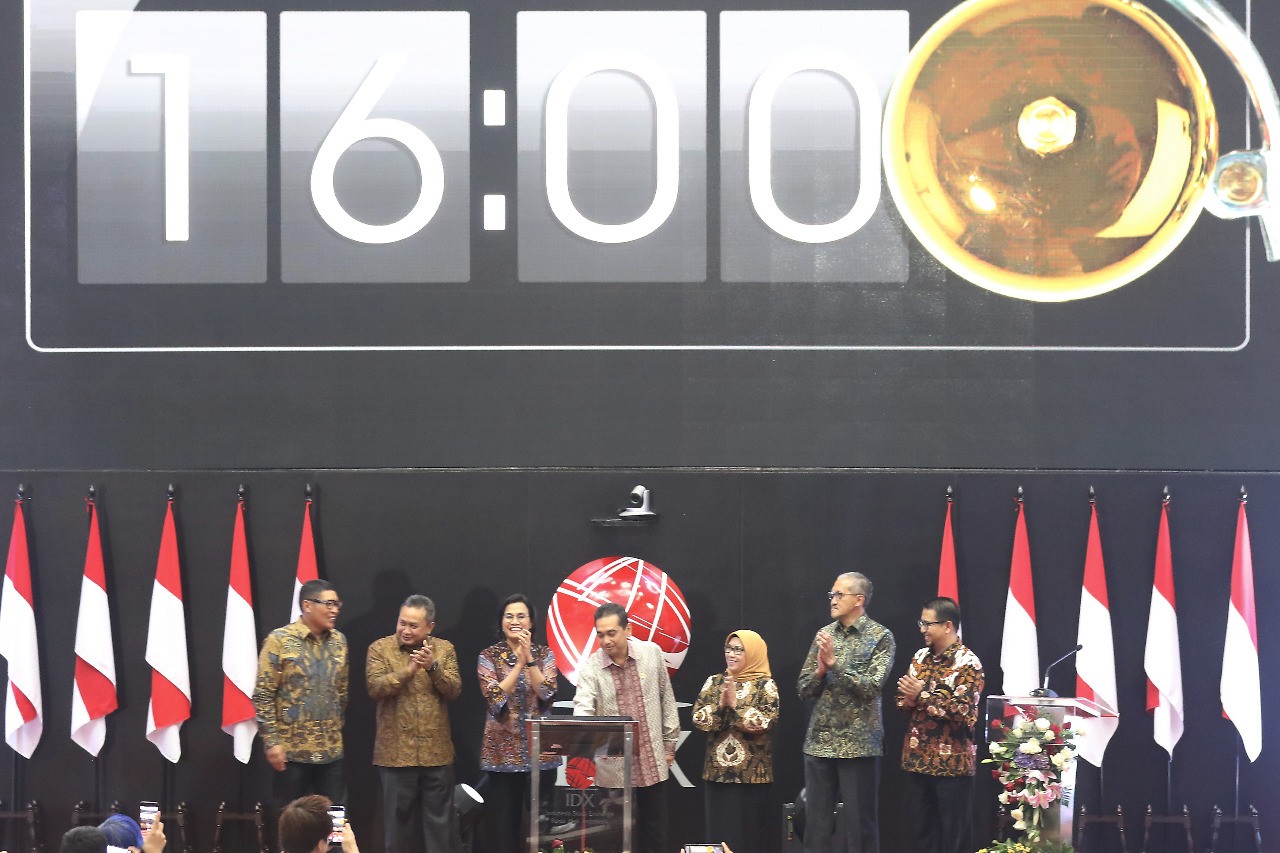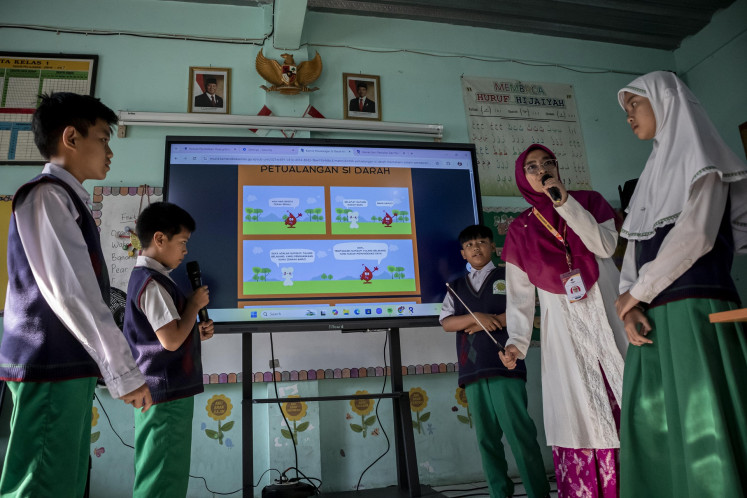Indonesia’s green taxonomy a path to sustainability
The taxonomy applies a “traffic light” system that classifies each business activity into a sub-sector, with a label of green, yellow or red.
Change text size
Gift Premium Articles
to Anyone

E
arlier this year, the Financial Services Authority (OJK) completed the first edition of Indonesia’s green taxonomy, indicating that the issue of sustainability has become more important and strategic not only for the financial market, but also for real sectors.
The document, as part of the sustainable finance road map phase II, will accelerate the implementation of sustainable finance principles in Indonesia. Overall, there are 919 business activities included – each with their own threshold and criteria.
The taxonomy applies a “traffic light” system that classifies each business activity into a sub-sector, with a label of green, yellow or red. This will signal to all stakeholders, including the financial market, how successfully those activities support the environmental goals set in government policies or national objectives, or minimize the potential environmental risk.
At the same time, this “traffic light” labeling could be the basis for an incentive mechanism in the future. Thus, the taxonomy is important for guiding existing and potential investors who are willing to conduct business in Indonesia.
As a snapshot of what the European Union has been doing lately, to achieve climate neutrality by 2050, the European Commission stated that the region needed additional annual investment of 175 billion euro (US$191 billion) to 290 billion euro in the next decade.
Besides completing an EU green taxonomy, EU member countries have agreed to push for the adoption of sustainability-related disclosure, where states make public the impact of investment decisions on sustainability and financial return.
Furthermore, the EU has plans to push the private sectors to adopt environment social governance (ESG) disclosure to enhance transparency and the implementation of climate and ESG benchmarks.
The overall EU strategy in transitioning to a climate-neutral economy is to focus on economic activities that could substantially contribute to the environmental objectives stated in the EU green taxonomy. At the same time, the region has also tried gaining support from broader stakeholders by initiating the ESG and sustainability disclosure. The EU began implementing its disclosure requirements in January.
The EU taxonomy divides business activities into two categories based on their environmental impact and sustainability.
[gal:2]
The first is Own Performance, which includes promoting sustainability for business activities that directly impact on the environment. More efficient manufacturing processes, low energy-use building renovations and lower carbon production manufacturing are examples of business activities in this category.
The second category is Enabling Activity. It includes business activities that contribute to environmentally sustainable practices in related business activities. Examples of this are manufacturers that produce components or equipment that are low in carbon emission production or high in energy efficiency for use in the transportation sector or the electronics industry.
The EU green taxonomy has formulated the criteria and measurements for 87 business activities in six sectors, made up of forestry, manufacturing, electricity and energy, transport and storage, construction and information and communication technology (ICT).
The taxonomy states clearly how the criteria, quantitative indicators and thresholds must be followed. These set criteria and indicators are substantial to enable investors and the financial sector direct their portfolio according to the requirements set in the taxonomy.
Meanwhile, companies can improve their transparency and learn what standards and measurements should be followed.
Back to Indonesia’s green taxonomy, as it is a living document still open to changes and improvements, it would be better if the OJK and all stakeholders focused on specific sectors and business activities for future revisions. Once completed, the scope of improvements could be expanded to other sectors. In doing so, we hope the Indonesian green taxonomy could be more effective, not only for investors but also to receive participation and support from banks and other financial institutions.
Of course, some key challenges remain, especially in the measurement criteria, performance metrics, the scope of impact and unintended consequences. The goal of the green taxonomy is not to punish or blacklist high-emitting companies or projects, but to stimulate and promote a climate-neutral transition in the economy and to bring sustainability into the investment-making process.
On the other hand, we must recognize that technology evolves fast, which could possibly transform high-emitting activities into low or zero-emission ones.
Integrating local and national contexts is also important for any country that wants to start these initiatives. Who knows whether coal-power plants can reduce carbon emission in the next five or 10 years by integrating new tools and technology?
--
Senior economist at Bank Mandiri









